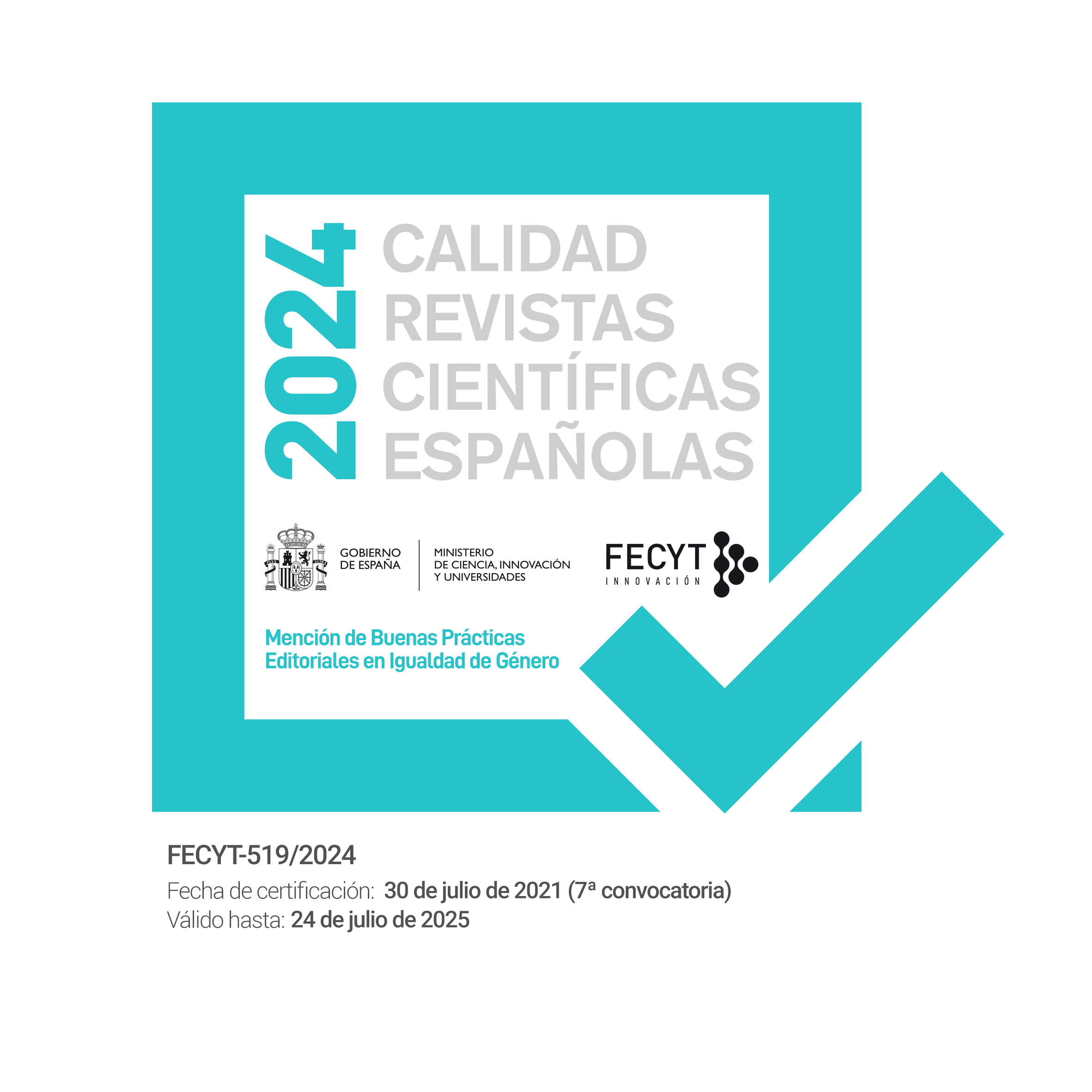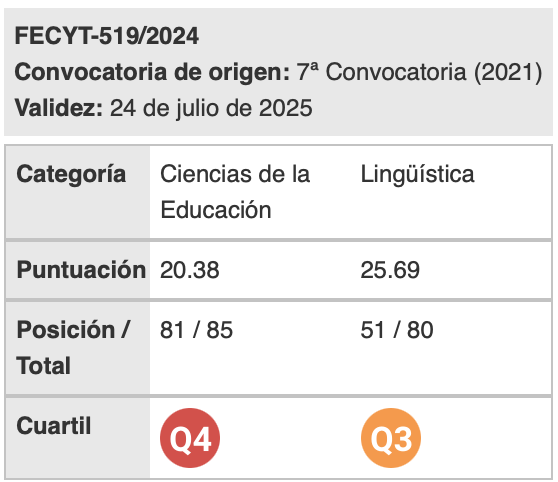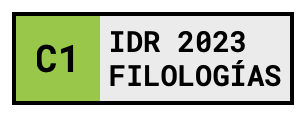The Riches of Hands-on Subtitling in the Foreign Language Classroom
Keywords:
subtitling, translation, foreign language learning, vocabulary acquisition, second language acquisitionAbstract
Using subtitles and subtitling as a means of diversifying foreign language teaching and learning has become increasingly popular in recent decades, particularly across Europe, where the European Commission has promoted, among others, the development of projects like ClipFlair, a web-based subtitling platform for foreign language learning (FLL). As part of this boost of research on FLL through subtitling, this empirical study was conducted in mainland China, where the role of subtitling in foreign language classroom has not been widely recognised by scholars. Carried out on seventeen higher education level Chinese L1 students, the experiment studied the effects of performing subtitling activities on English L2 vocabulary acquisition and discovered that doing subtitling tasks from L2 to L1 can result in a significantly better performance in vocabulary acquisition than doing intralingual subtitling activities (L2 to L2) or doing non-subtitling activities.
Downloads
References
Arslanyilmaz, A. & Pedersen, S. (2010). Improving language production using subtitled similar task videos. Language Teaching Research, 14(4), 377-395.
Birulés-Muntané, J. & Soto-Faraco, S. (2016). “Watching subtitled films can help learning foreign languages”. PloS one 11(6): e0158409.
Bolaños-García-Escribano, A. & Díaz Cintas, J. (2020). The cloud turn in audiovisual translation. In Ł. Bogucki & M. Deckert (Eds), The Palgrave Handbook of Audiovisual Translation and Media Accessibility (pp. 519-544). Basingstoke: Palgrave Macmillan.
Borghetti, C. & Lertola, J. (2014). Interlingual subtitling for intercultural language education: a case study. Language and Intercultural Communication, 14(4), 423-440.
Borrás, I. & Lafayette, R. C. (1994). Effects of multimedia courseware subtitling on the speaking performance of college students of French. The Modern Language Journal, 78(1), 61-75.
Brett, D. & González-Lloret, M. (2009). Technology-enhanced materials. In M. H. Long & C. J. Doughty (Eds), The Handbook of Language Teaching (pp. 351-369). Chichester: Wiley-Blackwell.
Chen, M.-L. (2012). Effects of the order of reading text or viewing a film and L1/L2 captions on reading comprehension. Perceptual & Motor Skills: Learning & Memory, 115(1), 18-26.
Danan, M. (1992). Reversed subtitling and dual coding theory: new directions for foreign language instruction. Language Learning, 42(4), 497-527.
Danan, M. (2015). Subtitling as a language learning tool: past findings, current applications, and future paths. In Y. Gambier, A. Caimi & C. Mariotti (Eds), Subtitles and Language Learning: Principles, Strategies and Practical Experiences (pp. 41-61). Bern: Peter Lang.
Díaz Cintas, J. & Fernández Cruz, M. (2008). Using subtitled video materials for foreign language instruction. In J. Díaz Cintas (Ed.), The Didactics of Audiovisual Translation (pp. 201-214). Amsterdam: John Benjamins.
Duff, A. (1989). Translation. Oxford: Oxford University Press.
d’Ydewalle, G. & Van de Poel, M. (1999). Incidental foreign-language acquisition by children watching subtitled television programs. Journal of Psycholinguistic Research, 28(3), 227-244.
Gambier, Y. (2015). Subtitles and language learning (SLL): theoretical background. In Y. Gambier, A. Caimi & C. Mariotti (Eds), Subtitles and Language Learning: Principles, Strategies and Practical Experiences (pp. 63-82). Bern: Peter Lang.
Guillory, H. G. (1998). The effects of keyword captions to authentic French video on learner comprehension. CALICO Journal, 15(1-3), 89-109.
He, X. 2015. Tapping the Pedagogical Potential of Subtitling in Foreign Language Learning. MA dissertation. London: University College London.
Hsu, C., Hwang, G.-J., Chang, Y.-T. & Chang, C.-K. (2013). Effects of video caption modes on English listening comprehension and vocabulary acquisition using handheld devices. Educational Technology & Society, 16(1), 403-414.
Incalcaterra McLoughlin, L. & Lertola, J. (2011). Learning through subtitling: subtitling as an aid to language learning. In L. Incalcaterra McLoughlin, M. Biscio & M. Á. Ní Mhainnín (Eds), Audiovisual Translation: Subtitles and Subtitling: Theory and Practice (pp. 243-263). Oxford: Peter Lang.
Jin, S. (2015). 基于提高高中生英语口语流利性的视频素材应用研究 [The Application of Video Materials in Improving Senior High School Students’ Oral Speaking Fluency]. MA dissertation. Harbin: Harbin Normal University.
Karakaş, A. & Sariçoban, A. (2012). The impact of watching subtitled animated cartoons on incidental vocabulary learning of ELT students. Teaching English with Technology, 12(4), 3-15.
Lambert, W. E., Boehler, I. & Sidoti, N. (1981). Choosing the languages of subtitles and spoken dialogues for media presentations: implications for second language education. Applied Psycholinguistics, 2, 133-148.
Lertola, J. (2013). Subtitling New Media: Audiovisual Translation and Second Language Vocabulary Acquisition. PhD thesis. Galway: National University of Ireland.
Lertola, J. (2015). Subtitling in language teaching: suggestions for language teachers. In Y. Gambier, A. Caimi & C. Mariotti (Eds) Subtitles and Language Learning: Principles, Strategies and Practical Experiences (pp. 245-268). Bern: Peter Lang.
Lertola, J. (2019a). Second language vocabulary learning through subtiltign. Spanish Journal of Applied Linguistics, 32(2), 486-514.
Lertola, J. (2019b). Audiovisual Translation in the Foreign Language Classroom: Applications in the Teaching of English and Other Foreign Languages. Research-publishing.net.
Markham, P. L. (1989). The effects of captioned television videotapes on the listening comprehension of beginning, intermediate and advanced ESL students. Educational Technology, 29(10), 38-41.
Markham, P. L. (1999). Captioned videotapes and second-language listening word recognition. Foreign Language Annals, 32(3), 321-238.
Marzà, A. & Torralba, G. (2015). Incidental language learning through subtitled cartoons: is it possible in a dubbing country? In Y. Gambier, A. Caimi & C. Mariotti (Eds) Subtitles and Language Learning: Principles, Strategies and Practical Experiences (pp. 199-220). Bern: Peter Lang.
Marzban, A. & Zamanian, M. (2015). The impact of the subtitling task on vocabulary learning of Iranian EFL learners. Journal of Applied Linguistics and Language Research, 2(1), 1-9.
Mousavi, F. & Gholami, J. (2014). Effects of watching flash stories with or without subtitle and reading subtitles on incidental vocabulary acquisition. Procedia-Social and Behavioural Sciences, 98, 1273-1281.
Neves, J. (2004). Language awareness through training in subtitling. In P. Orero (Ed.) Topics in Audiovisual Translation (pp. 127-140). Amsterdam: John Benjamins.
Paivio, A. (1986). Mental Representations: A Dual Coding Approach. New York: Oxford University Press.
Price, K. (1983). Closed-captioned TV: an untapped resource. MATSOL Newsletter, 12, 1-8.
Sokoli, S. (2006). Learning via Subtitling (LvS). A tool for the creation of foreign language learning activities based on film subtitling. In MuTra Proceedings 2006 – Multidimensional Translation: Audiovisual Translation Scenarios. Copenhagen: University of Copenhagen. <http://www.sub2learn.ie/downloads/2006_sokoli_stravoula.pdf> [22/08/2021].
Sokoli, S. (2015). ClipFlair: foreign language learning through interactive revoicing and captioning of clips. In Y. Gambier, A. Caimi & C. Mariotti (Eds), Subtitles and Language Learning: Principles, Strategies and Practical Experiences (pp. 127-147). Bern: Peter Lang.
Sokoli, S., Zabalbeascoa, P. & Fountana, M. (2011). Subtitling activities for foreign language learning: what learners and teachers think. In L. Incalcaterra Mcloughlin, M. Biscio & M. Á. Ní Mhainnín (Eds), Audiovisual Translation: Subtitles and Subtitling: Theory and Practice (pp. 219-242). Oxford: Peter Lang.
Talaván, N. (2006). Using subtitles to enhance foreign language learning. Porta Linguarum, 6, 41-52.
Talaván, N. (2009). Aplicaciones de la traducción audiovisual para mejorar la comprensión oral de inglés. PhD Dissertation. Madrid: Universidad Nacional de Educación a Distancia.
Talaván, N. (2010). Subtitling as a task and subtitles as support: pedagogical applications. In J. Díaz Cintas, A. Matamala & J. Neves (Eds), New Insights into Audiovisual Translation and Media Accessibility (pp. 285-299). Amsterdam: Rodopi.
Talaván, N. (2011). A quasi-experimental research project on subtitling and foreign language acquisition. In L. Incalcaterra-McLoughlin, M. Biscio & M. Á. Ní Mhainnín (Eds), Audiovisual Translation Subtitles and Subtitling. Theory and Practice (pp. 197-217). Oxford: Peter Lang.
Talaván, N. & Rodríguez-Arancón, P. (2014). The use of reverse subtitling as an online collaborative language learning tool. The Interpreter and Translator Trainer, 8(1), 84-101.
Tsai, F.-H. (2010). Integrating Feature Films with Subtitles to Enhance the Listening Comprehension of Students Attending College in Taiwan. PhD thesis. San Diego: Alliant International University.
Van de Poel, M. & d’Ydewalle, G. (2001). Incidental foreign-language acquisition by children watching subtitled television programs. In Y. Gambier & H. Gottlieb (Eds), (Multi)Media Translation: Concepts, Practices and Research (pp. 259-274). Amsterdam: John Benjamins.
Vanderplank, R. (1988). The value of teletext sub-titles in language learning. ELT Journal, 42(4), 272-281.
Vanderplank, R. (1990). Paying attention to the words: practical and theoretical problems in watching television programmes with uni-lingual (CEEFAX) subtitles. System, 18(2), 211-234.
Vanderplank, R. (2015). Thirty years of research into captions/same language subtitles and second/foreign language learning: distinguish between ‘effects of’ subtitles and ‘effects with’ subtitles for future research. In Y. Gambier, A. Caimi & C. Mariotti (Eds), Subtitles and Language Learning: Principles, Strategies and Practical Experiences (pp. 19-40). Bern: Peter Lang.
Vanderplank, R. (2016). Captioned Media in Foreign Language Learning and Teaching: Subtitles for the Deaf and Hard-of-Hearing as Tools for Language Learning. Basingstoke: Palgrave Macmillan.
Van Lommel, S., Laenen, A. & d’Ydewalle, G. (2006). Foreign-grammar acquisition while watching subtitled television programmes. British Journal of Educational Psychology, 76, 243-258.
Wang, Y. (2014). The Effects of L1/L2 Subtitled American TV Series on Chinese EFL Students’ Listening Comprehension. MA dissertation. Lansing: Michigan State University.
Williams, H. & Thorne, D. (2000). The value of teletext subtitling as a medium for language learning. System, 28(2), 217-228.
Winke, P., Gass, S. & Sydorenko, T. (2010). The effects of captioning videos used for foreign language listening activities. Language Learning & Technology, 14(1), 65-86.
Yoshino, S., Kano, N. & Akahori, K. (2000). The effect of English and Japanese captions on the listening comprehension of Japanese EFL students. Language Laboratory, 37, 111-129.
Downloads
Published
How to Cite
Issue
Section
License
Authors who publish with this journal agree to the following terms:
- Authors retain copyright and grant the journal right of first publication with the work simultaneously licensed under a Creative Commons Attribution License that allows others to share the work with an acknowledgement of the work's authorship and initial publication in this journal.
- Authors are able to enter into separate, additional contractual arrangements for the non-exclusive distribution of the journal's published version of the work (e.g., post it to an institutional repository or publish it in a book), with an acknowledgement of its initial publication in this journal.
- Authors are permitted and encouraged to post their work online (e.g., in institutional repositories or on their website) prior to and during the submission process, as it can lead to productive exchanges, as well as earlier and greater citation of published work (See The Effect of Open Access).

Revista de Lenguas para fines específicos is licensed under a Creative Commons Reconocimiento-NoComercial-SinObraDerivada 4.0 Internacional License.

























